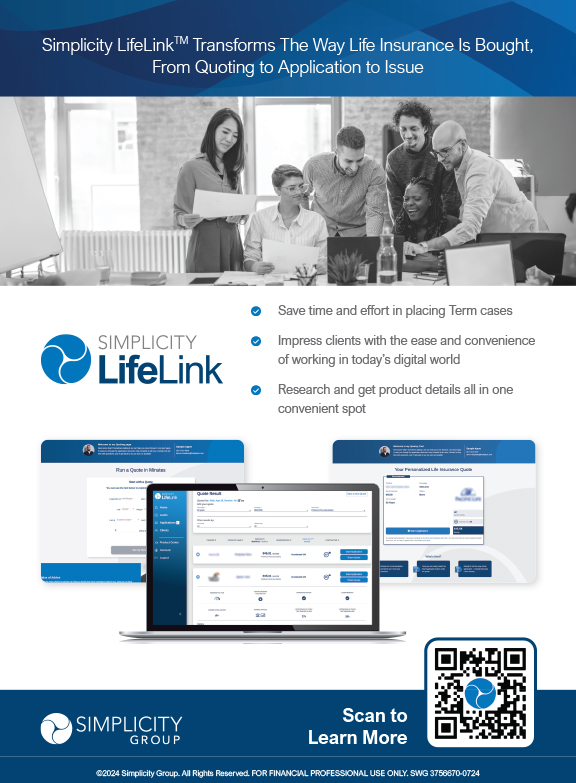Let’s begin this month’s great reveal with a reminder of what we are doing and why. There is an astronomical caregiving debt that will come due for baby boomers, and everyone must understand that bill will be paid. As we know, some of it will be passed on to future generations through our ever-expanding system of government entitlements. But for those who can afford to pay or at least begin paying as private pay citizens, there is no escape from personal fiscal responsibility.
The money already exists to pay the bill, and the government knows exactly where those dollars are waiting. And, by the way, your entire career in the insurance business is related to the creation and protection of these same dollars. There is $6.7 trillion in home equity,1 $4.2 trillion in traditional IRA accounts,2 and $3.2 trillion in 401(k) plans.3 If you fail at your chosen profession these are the very dollars that will be exposed and sacrificed to bad planning.
First—believe it or not—pricing stability will return to this line of business. NAIC rate stabilization and very conservative pricing assumptions will remove turmoil from the market. New products are being priced with a .5 percent lapse rate and a 4 percent investment return over 50 years.
I believe obstinate regulators will have to compromise, oversold benefits will be curtailed, and sales will continue to climb. This industry will never walk away from $500 million of new individual LTC insurance premium or ignore the explosion of asset-based sales. According to LIMRA, combo LTC insurance sales were $1.2 billion in 2010 and $2.2 billion in 2011 and are still climbing rapidly, with average premium north of $130,000.
I also believe we need to re-examine the basic philosophy of the sale. It is not a process of elimination: your client, welfare or insurance. I have come to understand that indeed the “softer” issues are the most important: freedom, choice and dignity. I have come to understand that even the smallest amount of protection can make a dramatic difference in the nature of a claim. I believe what we are trying to accomplish is not just avoiding catastrophic financial loss but to do everything in our power to avoid catastrophic government dependence. I would even suggest we have oversold the risk.
In preparation for a recent presentation at the Society of Actuaries with Milliman’s Amy Pahl, I asked her to take a look at the claims data available. The conclusions do indicate that too much of a good thing may be a contributing factor.
The average percentage of available benefit purchased that was used for claims was 40.1 percent, and the percentage of policyholders who maxed their purchased benefit amounts was only 14.1 percent. Please understand that even the smallest amount of additional insurance dollars can transform your clients’ control of their own care.
Yet what we need to be trying to accomplish is much more subtle and nuanced. Even a supplemental $50-a-day policy tied to their other fixed income will protect clients from the clutches of government controlled care and maintain their status as private-pay patients. Approximately half of all claims filed are closed in a year, and just having time to think and get organized is a major largesse. Add that to the fact that hard-pressed state social services are very appreciative for even the smallest buffer to their overburdened obligations.
Now let’s peer into the proverbial crystal ball and outline the direction products are hopefully going to take. There is no mystery about what is wrong with today’s products. They remain too expensive and, in many cases, too large. They continue to be sold and purchased on an optional basis. I believe the only choice is to decide to not do what is right to protect your family or your profession.
Benefits must be targeted to the actual risk and the application process must be abbreviated with technology. Sales and marketing training must be dramatically enhanced. All of this now gives us a clear formula for future product success. Stable, reduced pricing, greater benefit flexibility, access to qualified dollars, a rededication to focused agent sales training and a dramatically streamlined application/enrollment process.
Here’s how it all boils down. Two directions going forward: simpler, more flexible, much less expensive policies with express underwriting where applicable. In addition, a strategy to access qualified dollars must be found. Sounds easy—but it’s not.
Just for fun let’s talk about some details. Don’t misunderstand, I am cosmically delighted for all those who would rather utilize insurance dollars to solve problems. I am just not going to hold my breath waiting for reality to settle in and find common ground.
First I am a member of the Society of Actuaries’ long term care refinement group, under the brilliant direction of my good friend, consulting actuary Robert Darnell. The group is currently working on future product development. Our suggestions to the National Association of Insurance Commissioners and the National Council of Insurance Legislators on strategies to reduce Medicaid were as follows:
1. Allow shorter benefit periods. Remember, $25,000 buys one year of home health care, $50,000 buys one year of assisted living, and $75,000 buys one year of nursing home care.
2. Allow larger elimination periods, two to five years, and sell in $25,000 increments.
3. Remove or lower “inflation protection” required in all applications.
4. Remove “rejection of non-forfeiture” from all applications.
5. Allow multiple insureds in one benefit pool.
6. Allow for longer waiting (deferral) periods.
7. Allow flexible premiums to be filed.
8. Streamline the application process.
9. Allow funding with pre-tax dollars, i.e., 401(k)s.
10. Allow LTC insurance and combo policies in cafeteria plans.
11. Expand the sales force and mandate LTC insurance certification for all life and health agents.
12. Expand combo options to include disability income and critical illness.
I am also this year’s co-chairman of the Society of Actuaries’ “Future of Long Term Care Think Tank,” with Roger Loomis, Actuarial Resources Corporation. (I really do appreciate bright actuaries who care.) This is a multi-disciplinary group—those in the industry who are directly concerned with maintaining a future for all involved. We have met periodically over the years to evaluate and give recommendations to those directly involved in the LTC insurance struggle.
The group’s meeting in September generated some additional suggestions. The reality is that qualified dollars must be tapped into on the right terms, otherwise wrong will be done unto us.
The suggestion is to create a qualified long term care account (LTCA) either standalone or as part of a new long term care account. A universal LTCA could be created with short and fat benefit policies—with the LTCA representing consumer coinsurance. Interest risk would be transferred to the policyholder and managed care would be built in to preserve the LTCA. Monies could be easily reallocated to address alternate risk possibilities.
As we enter yet another year of possibilities, forgive me for suggesting our future is burning bright…and thanks to all who read this column and for being part of the solution!
Other than that I have no opinion on the subject.
Footnotes:
1. “Americans See Biggest Equity Jump in 60 Years: Mortgages,” Bloomberg, June 14, 2012.
2. Investment Company Institute, www.ici.org.
3. Ibid.
























